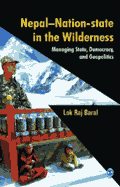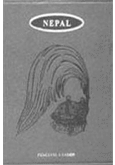Father Giuseppe de Rovato’s “An Account of the Kingdom of Nepal,” published in 1786, is the rare eye-witness description of the Gorc’ha conquest of the Kathmandu Valley in 1767-69. It is believed to be the first article written by any European on King Prithvi Narayan Shah – the founder of modern Nepal. The article was translated in English by Sir John Shore in the second volume of the Asiatic Researches and published from Calcutta in 1790.
In this 16-page document, Giuseppe de Rovato describes the Kingdom of Nepal in a nutshell. The focus is on its three main principalities of the Kingdom spelled as Cat’hmandu, Lelit Pattan and B’hatgan, with high appreciation of their houses, wood doors and windows, streets, temples, and water supply system. He states that the Kingdom is very ancient and it has preserved its peculiar language and independence. The cause of its ruin, according to Rovato, is “dissention which subsists among the three kings” of these three principalities.
The write up outlines some information on Hinduism (‘Brahmanism’) and Buddhism (‘Baryesu’) as practiced in Nepal. The difference in practice between Hinduism in Nepal and India, he says, is that in India, the Hindus are “mixed with the Mohammedens, their religion also abounds with many prejudices, and is not strictly observed; whereas in Nepal, where there are no Muselmans (except one Cashmirian merchant) the Hindu religion is practiced in its greatest purity.” The main purpose of Rovato’s documents, however, remains to describe how the King of Gorc’ha, “having already possessed himself of all the mountains which surround the plain [Valley] of Nepal, began to descend into the flat country, imagining he should be able to carry on his operations [here] with the same facility and success as had attended him on the hills.”
Father Robato, who was the prefect of the Roman Mission, describes the nature of the expedition of the King of Gorc’ha following the first defeat with Kirtipur people: “The King of Gorc’ha, despairing of his ability to get possession of the plain [Valley] of Nepal by strength, hoped to effect his purpose by causing a famine; and with this design stationed troops at all the passes of the mountains to prevent any intercourse with [the Valley]; and his orders were most rigorously obeyed, for every person who was found in the road, with only a little salt or cotton about him, was hung upon a tree; and he caused all the inhabitants of a neighbouring village to be put to death in a most cruel manner: even the women and children did not escape, for having supplied a little cotton to the inhabitants of Nepal [Valley]; and when I arrived in that country at the beginning of 1769; it was a most horrid spectacle to behold so many people hanging on trees in the road. However, the King of Gorc’ha being also disappointed in his expectations of gaining his end by this project, fomented dissensions among the nobles of the three kingdoms of Nepal, and attached to his party many of the principal ones, by holding forth to them liberal and enticing promises; for which purpose he had about 2000 Brahmens in his service.”
What Rovato writes about King Prithvi Narayan Shah does not hint anything good about him nor his military capacity or strategic thinking that led to the conquest of Nepal Valley. It must be pointed out here that some of the descriptions in the Account of Father Rovato as noted above may have been exaggerated. As Rovato was based in Nepal Valley, any aggression on it was also an aggression on his missionary activities here (including the business of Christianization). The new ruler had apparent dislike for ‘firangees’ (Europeans) in general. Firstly, Prithvi Narayan Shah did not want them to come and convert the local people into Christianity. Secondly, he was not in favour of the British East India Company trading with the hill principalities and continuing using Kathmandu Valley as the transit point between Tibet and India for their trade.
As Prithvi Narayan, who had begun his military campaign since 1744, continued to expand his influence in the Nepal Valley, it eventually came into conflict with the British power in Bengal – the later already being in some relationship with the Valley principalities by that time. Robert Clive’s victory over the Nawab of Bengal at the battle of ‘Plassey’ (Palashi) in 1757 had already helped the British to consolidate their position in Bengal. One of the major issues in dispute with the British even after the consolidation of Gorc’ha in the Valley of Nepal was the question of trade both with and through Nepal.
Additionally, Father Rovato, who was expelled from Lhasa along with his colleagues who were working for the Capuchin mission founded there in 1760, was not a preferred person for the new ruler of Nepal. His link with the British was suspected in the Nepal Valley. The Capuchin Fathers were said to have tried to build better relationship with them. For example, Rovato mentions that Father Michael Angelo had provided medical aid to Prithvi Narayan Shah’s brother who was wounded during the first Kirtipur war. This did not help the Capuchin fathers much.
When Cat’hmandu King Jayaprakash Malla sought the help of the East India Company in his fight against Gorc’ha, suspicion fell on the goodwill being created. When Gorc’ha soldiers surrounded half the city of Lelit Pattan to the westward, Father Rovato also had to run away from his house, which was close by, “to avoid being exposed to the fire of the besiegers.” It was only with the greatest difficulty that Gorc’has had been convinced later that the Christians be allowed to leave the country. Father Rovato indeed left the Valley on 4th February 1769. He is also said to have provided some details of the topography of Nepal to the British after he left Nepal.
This is an interesting article to read. It helps to understand many things about the Gorc’ha conquest of Nepal. However, unless verified by other sources, some of the descriptions in the article may have a quantity of his bias and effect of the propaganda war of which Gorc’ha rulers were known for at that time.



